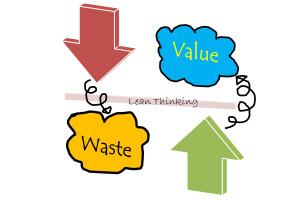 As a teenager, I worked in a manufacturing facility that made communication antennas.
As a teenager, I worked in a manufacturing facility that made communication antennas.
Each day I saw workers drilling, assembling, and bending metal tubing into different types of antennas. And also each day, I saw the same person from the quality department bring back a cart full of defective pieces that had failed the required specifications. As I talked to some of my fellow coworkers, I learned that this was the way that the business had operated for years — with the expectation that there would always be multiple parts that would require rework each day.
As I began my training in Lean Six Sigma, I learned that one of the major tenets in Lean is the elimination of waste (or muda, in Japanese).
Taiicho Ohno, a Toyota executive, defined seven areas of waste. Although several mnemonics have been developed to help one remember these seven areas, I like TIM WOOD:
T – Transport – too much movement of people and products either inside or outside the company
I – Inventory – too much finished product kept in inventory
M – Motion – too much bending, lifting, etc.
W – Waiting – too much time waiting for materials or parts
O – Over production – too much product produced at inappropriate times
O – Over processing – too complicated production methods or overly tight specifications
D – Defects – too many errors, too much rework.
Another waste has recently been added, that of skills:
S – Skills – Underutilizing capabilities, delegating tasks with inadequate training
Waste can be seen in almost every process, including manufacturing (automobiles), transactional (banking), or product development (pharmaceuticals). It is incumbent to ensure that, as processes are reviewed and improved, potential wastes are identified and eliminated systematically. By eliminating waste, a company can devote more resources (money and employees) to drive down costs and increase customer satisfaction.
How are you helping your employees to work smarter by reducing the amount of time they spend on non-productive activities and correcting errors? If your business processes need a “check-up,” please email me at michael@leadingchangeforgood.com! I’d love to help you get back to a healthy, productive workplace!




Recent Comments